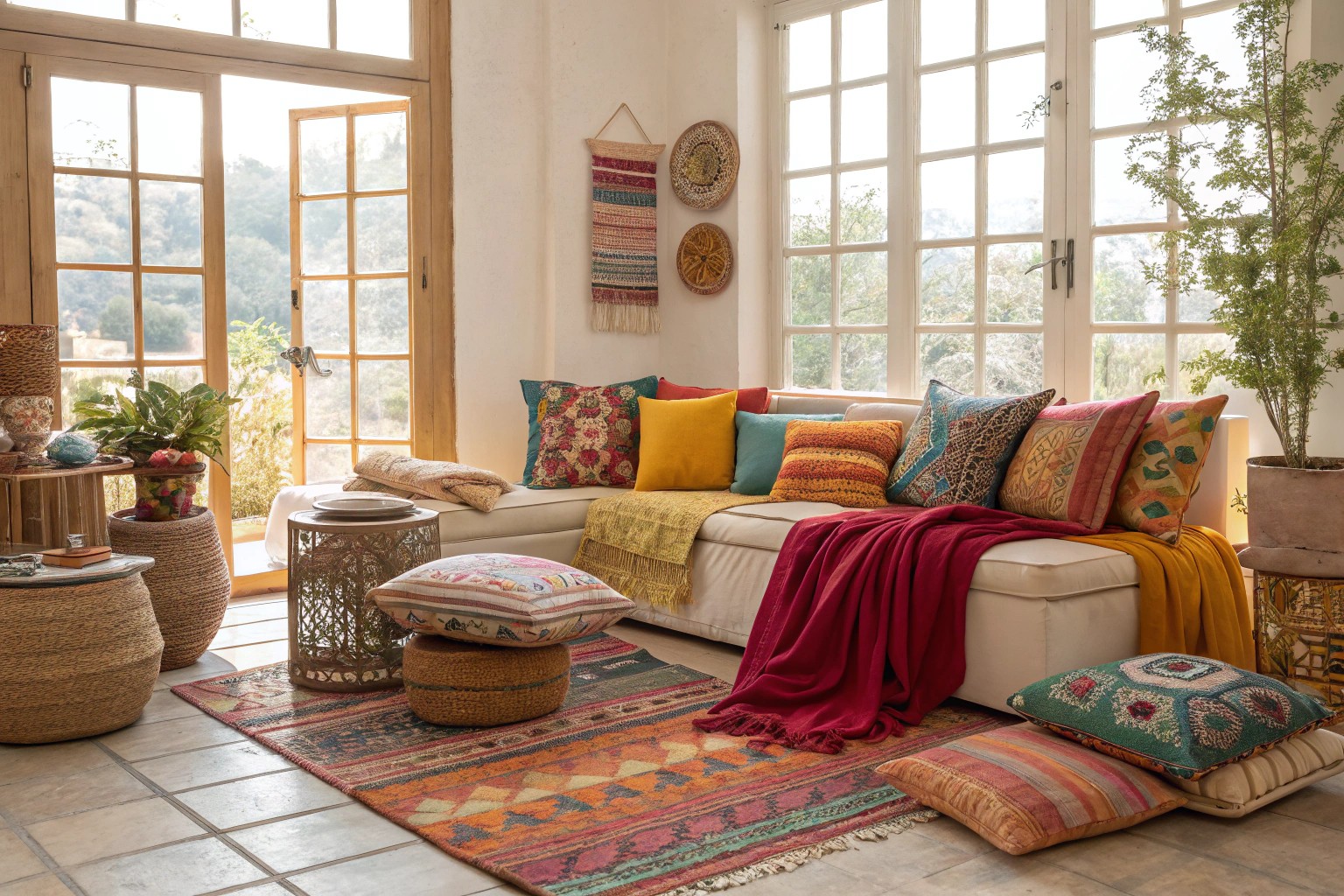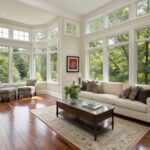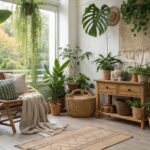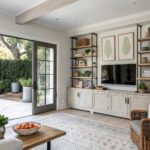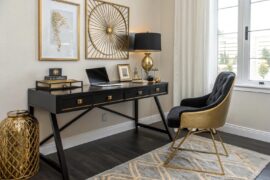In today’s economy, many Americans are embracing challenges like “No Buy” to save money and combat overconsumption. Creating a fresh, inspiring space doesn’t require spending a dime—it simply demands a fresh perspective and creativity. After helping countless clients transform their spaces on tight budgets, I’ve compiled this guide to help you see your home with new eyes and reimagine what you already have.
The Art of “Shopping Your Home”
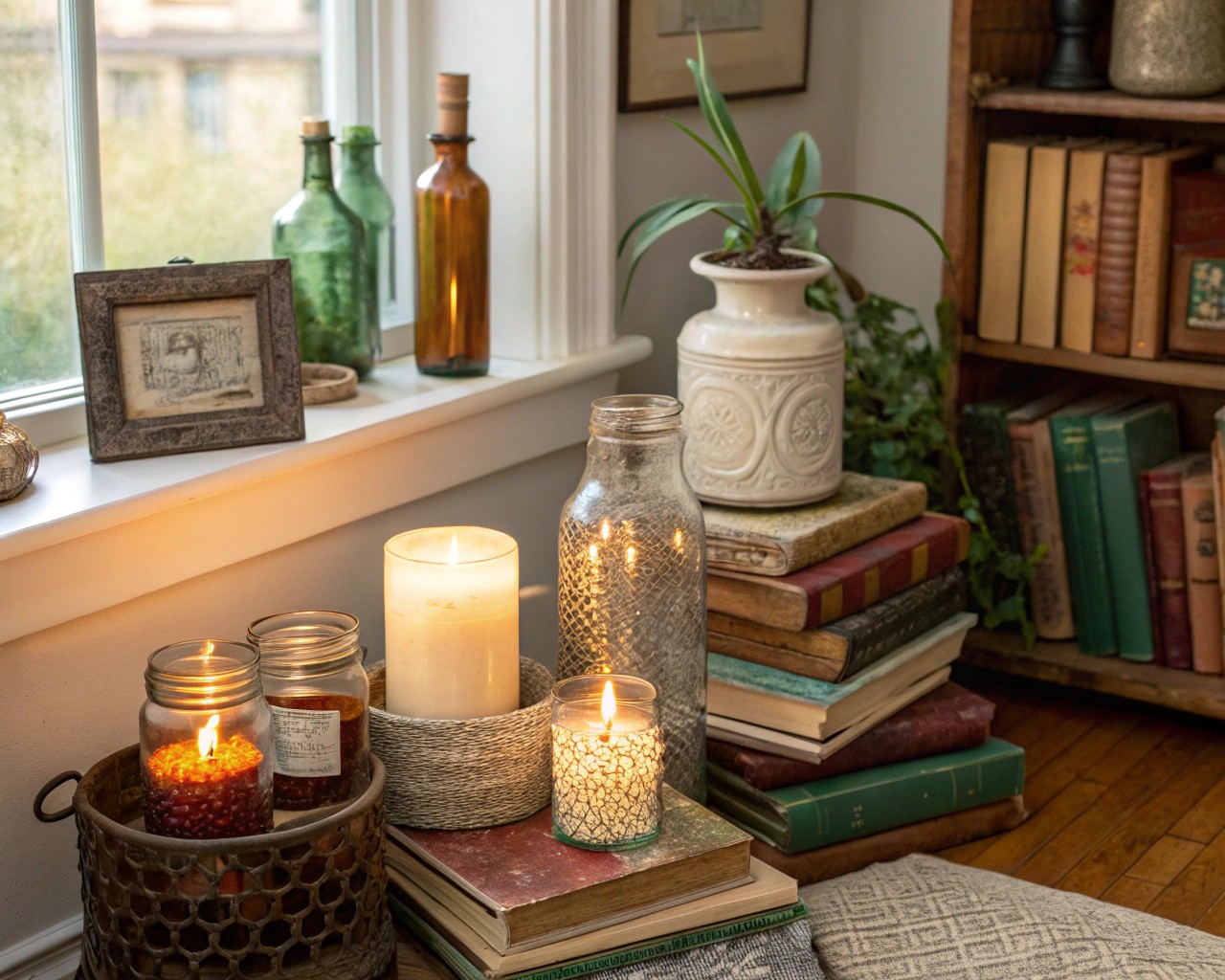
When was the last time you truly examined the items in your home? The quickest way to refresh any space is to see your existing belongings with fresh eyes. That throw pillow in your bedroom? It might look even better brightening up the living room sofa. Those candles gathering dust in the bathroom? They could become the centerpiece of your dining table.
What I’ve discovered after years of design work is that most people own far more than they realize—they’ve just stopped seeing it. “Shopping your home” means looking at your existing possessions as if you were browsing a store.
How to Shop Your Home Effectively
- Take a full inventory, room by room
- Photograph items you might want to use elsewhere
- Look for forgotten treasures in storage, attics, and closed cabinets
- Consider each item’s potential, not just its current use
One client, Melissa from Chicago, was stunned by the potential hidden in her own storage. She had completely forgotten about some blue ceramic vases packed away two years prior. Moving them to her dining room created a significant change, tying in perfectly with artwork she already had displayed.
Decluttering: The Essential First Step
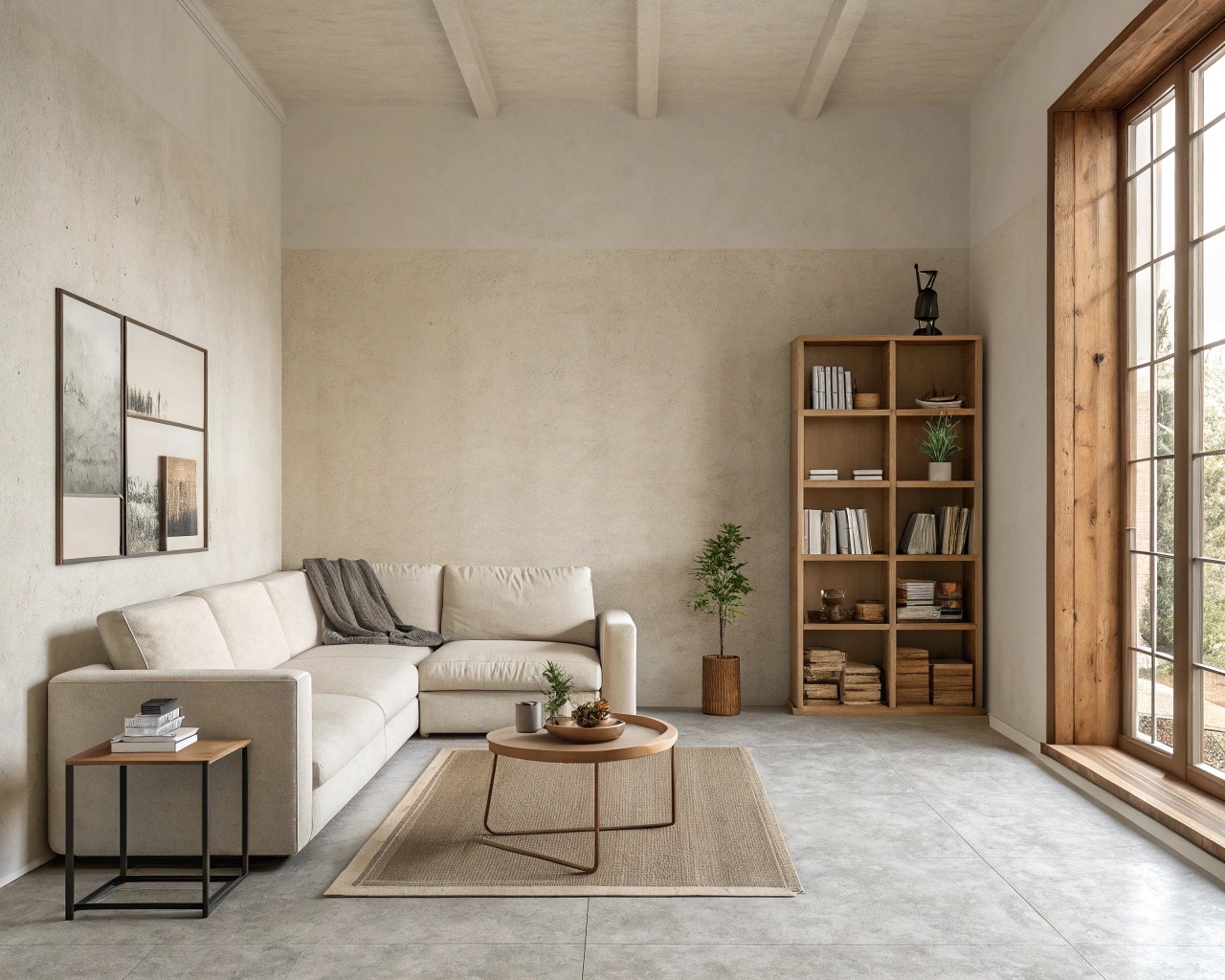
Before diving into decorating, the first step in any zero-cost makeover is decluttering. Clear out items that no longer serve the space—old magazines, unused décor, or anything that makes your room feel overcrowded. This simple step makes the room feel more open and inviting, setting a clean foundation for the rest of your refresh.
The Impact of Decluttering
| Before Decluttering | After Decluttering |
|---|---|
| Visual noise and confusion | Clear visual focus |
| Space feels smaller | Room appears larger |
| Items lose impact | Important pieces stand out |
| Cleaning is difficult | Maintenance becomes easier |
| Decision fatigue | Mental clarity |
Minimalist designer Marie, with whom I’ve collaborated, emphasizes that transforming hundreds of homes has taught her the importance of subtraction before addition. She consistently begins by removing what doesn’t belong, noting the remarkable difference it makes when a space is freed from the burden of excess.
Room-by-Room Refresh Strategies
Living Room Transformations
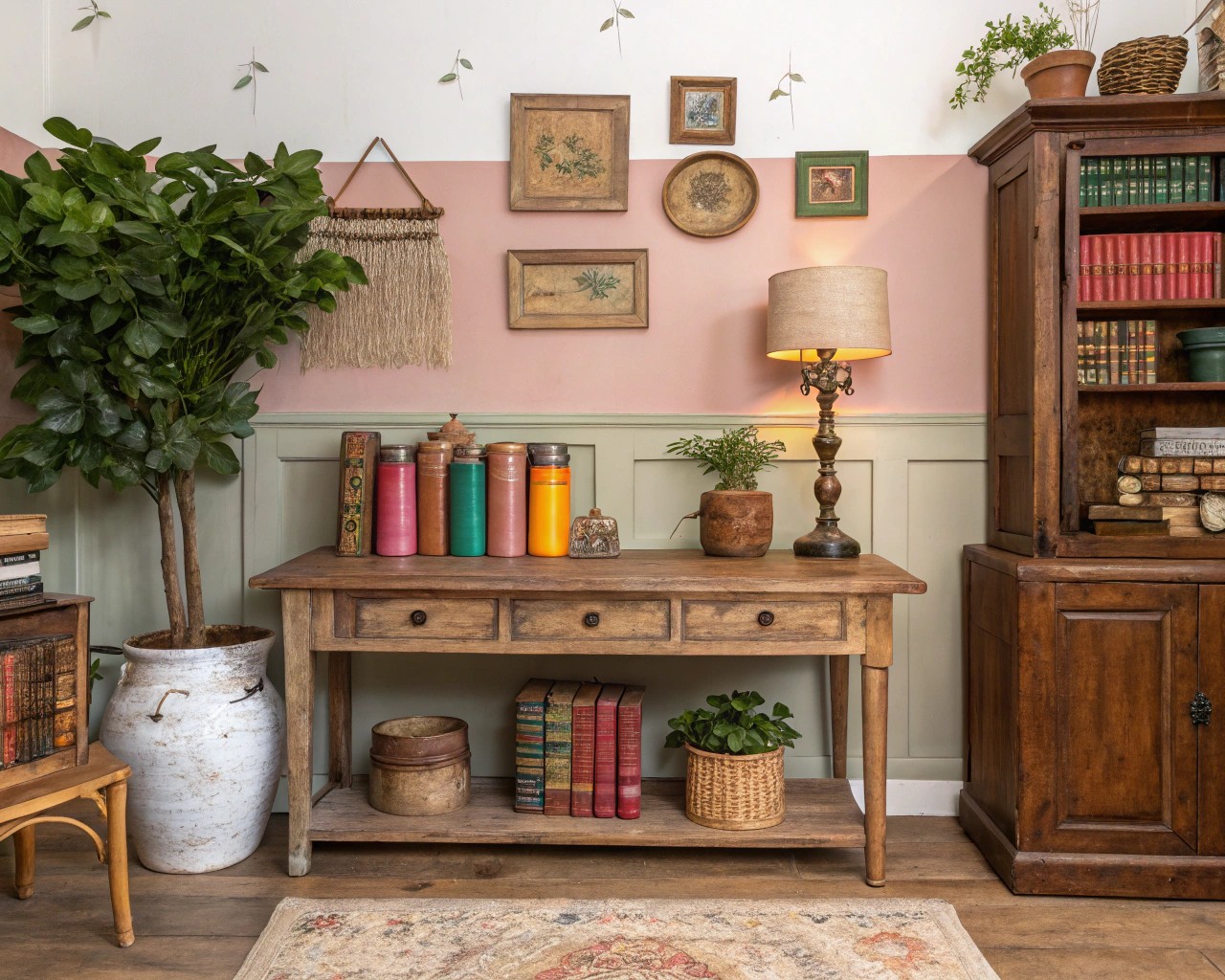
The living room often makes the biggest impact on visitors and your daily life. Try these zero-cost strategies:
-
Rearrange furniture for better flow: Pull your sofa away from the wall, create conversation areas, or reorient furniture toward natural focal points.
-
Rotate and redistribute accessories: Swap throw pillows between rooms, restyle bookshelves, or repurpose decorative objects from elsewhere in your home.
-
Create symmetry: Balance similar elements on either side of a focal point—matching lamps, artwork, or similar-sized objects can create a sense of intention.
Client Story: James and Sarah had grown tired of their living room after five years without changes. By simply pushing their sofa against a different wall and bringing an armchair from the bedroom, they created a whole new perspective and flow. “It feels like we moved to a new house,” Sarah noted.
Bedroom Refreshes

Your bedroom should be a sanctuary. Here’s how to refresh it without spending:
-
Float your nightstand: Move it away from the wall to create more visual space, aligning the top with your mattress height for a streamlined look.
-
DIY a headboard: Use an existing rug hung on the wall, or repurpose a decorative screen or even a beautiful quilt.
-
Rethink your textiles: Rotate seasonal bedding, swap duvet covers, or layer existing blankets and pillows in new combinations.
One of my favorite client transformations was helping Emma create a “luxury hotel feeling” by simply bringing a neglected armchair into her bedroom and positioning it near the window as a reading nook. “I’ve lived here eight years and never thought of using the space this way,” she said.
Kitchen and Dining Area Revitalization

Kitchens and dining areas can be refreshed without renovations:
-
Rearrange open shelving displays: Group items by color or function for visual impact.
-
Reimagine furniture placement: Try placing your dining table against a wall to increase free space when not entertaining.
-
Bring nature in: Rotate plants between rooms or display seasonal fruits in a decorative bowl.
Rethinking Furniture Placement
The quickest way to transform any room is to rearrange your furniture. This zero-cost strategy can completely change how a space functions and feels.
Principles of Effective Furniture Arrangement
| Principle | Description | Example |
|---|---|---|
| Focal Point | Orient furniture toward natural or created focal points | Position seating to face fireplace or window |
| Conversation Areas | Arrange seating to facilitate interaction | Create U-shaped seating arrangements |
| Traffic Flow | Leave clear pathways through the space | Keep 30-36 inches for main pathways |
| Balance | Distribute visual weight throughout the room | Pair larger pieces with grouped smaller items |
| Functionality | Arrange according to how you use the space | Position reading chair near window light |
My designer colleague Sarah Stacey always emphasizes starting with furniture placement when refreshing client spaces. She skillfully brings rooms to life by mixing patterns and colors, ensuring elements are well-balanced throughout the room.
Before & After: The Power of Rearrangement
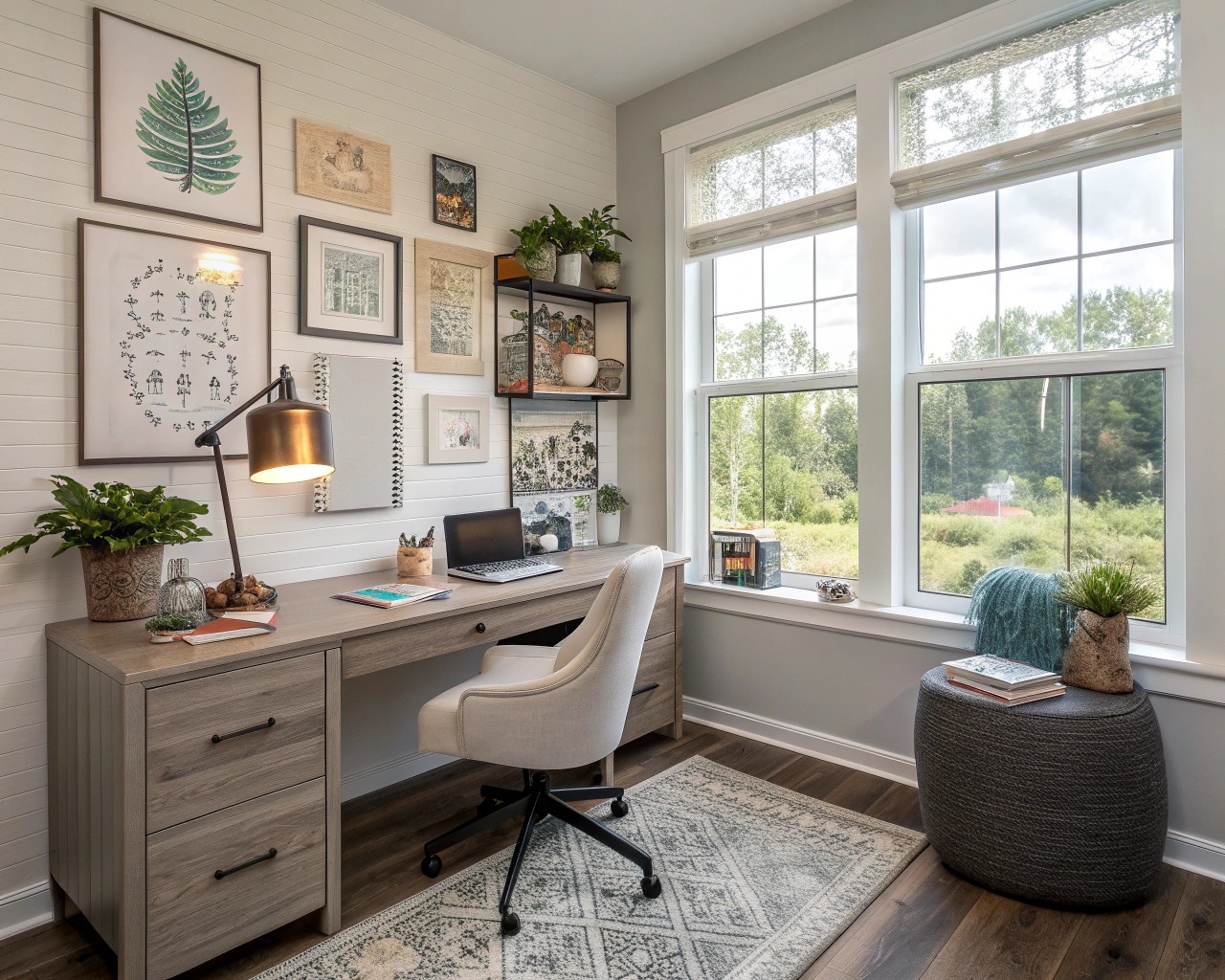
| Room | Before | After | Impact |
|---|---|---|---|
| Living Room | Furniture pushed against walls | Floating furniture creating conversation area | More intimate feel, improved flow |
| Bedroom | Bed centered on longest wall | Bed positioned diagonally in corner | Created space for reading nook |
| Dining Area | Table centered in room | Table against wall with bench seating | Opened up floor space for everyday use |
| Home Office | Desk facing wall | Desk facing window | Improved mood and productivity |
The Rodriguez family had been struggling with their awkward L-shaped living room for years. We simply moved their sofa to float perpendicular to the wall and repositioned their two armchairs to create a comfortable conversation area while opening up the traffic flow. “We can actually have people over without everyone feeling cramped now,” Maria Rodriguez commented.
Creative Repurposing and Upcycling
Some of the most impressive zero-cost transformations come from seeing new potential in existing items:
Unexpected Transformations
- Vintage suitcases: Stack as side tables or use as decorative storage
- Old bottles: Repurpose as vases or decorative objects
- Books: Use as risers to elevate lamps or create impromptu side tables
- Old scarves or fabric: Transform into pillow covers or table runners
- Trays: Use on ottomans to create coffee tables
One client discovered an old camera collection gathering dust in storage. By displaying these vintage pieces as decorative objects on bookshelves, they created an entirely new visual theme for their living room at zero cost.
Creative Textile Transformations
Existing textiles can be repurposed to breathe new life into spaces:
-
Upholster with what you have: Use old bed sheets or clothes you no longer wear to recover seat cushions.
-
Create new pillow covers: Repurpose duvet covers, tablecloths, or even clothing into decorative pillows.
-
Rotate rugs: Swap rugs between rooms for an immediate refresh.
In my own home, I transformed a beloved but worn cotton tablecloth into throw pillow covers that now brighten my living room sofa—proving that sentimental items can find new life rather than being discarded.
The Psychology of Space
The way we perceive our spaces has as much to do with psychology as with physical elements. Understanding these principles can help you create impactful zero-cost transformations.
Light Manipulation
Light dramatically affects how we perceive spaces, and manipulating it costs nothing:
-
Maximize natural light: Remove heavy window coverings and let sunlight flood your space by opening blinds and pulling back curtains.
-
Reposition mirrors: Place mirrors opposite windows to bounce light throughout the room.
-
Adjust lamp positions: Move existing lighting to illuminate dark corners.
A client in Seattle with a notoriously dark apartment was amazed at the transformation when we simply removed heavy drapes, cleaned windows, and repositioned three existing lamps. “I can’t believe I lived with it so dark for so long,” she remarked. “The space feels twice as large now.”
Seasonal Refreshes
One of the most effective zero-cost strategies is rotating decor seasonally, creating the feeling of a refreshed space without purchasing anything new.
Seasonal Rotation Plan
| Season | Items to Bring Out | Items to Store | Natural Elements to Incorporate |
|---|---|---|---|
| Spring | Light throws, floral pillows, pastel accessories | Heavy textiles, dark accessories | Fresh flowers, budding branches |
| Summer | Lightweight textiles, coastal elements, light colors | Winter accessories, heavy fabrics | Green plants, fresh herbs, seashells |
| Fall | Warm throws, textured pillows, amber glassware | Summer brights, lightweight fabrics | Autumn leaves, pinecones, gourds |
| Winter | Velvet pillows, heavy blankets, metallic accents | Light summer decor, bright colors | Evergreen branches, berries, citrus fruit |
By creating a simple rotation system, you can store seasonal items and rediscover them with fresh appreciation when their season returns.
“I used to spend hundreds each season trying to refresh my home,” shares Diane, a longtime client. “Now I simply rotate what I already own, and each season feels like unwrapping gifts I’d forgotten about.”
Creating New Focal Points
Every room benefits from a strong focal point that draws the eye and anchors the space. Creating new focal points costs nothing but makes a significant impact.
Strategies for Creating Impactful Focal Points
-
Rotate wall art: Move existing artwork to new locations or group pieces differently for greater impact.
-
Restyle bookshelves: Arrange books by color, size, or subject to create visual interest.
-
Create vignettes: Group existing decorative objects to tell a story.
-
Use structural elements: Highlight architectural features you already have.
One memorable transformation involved helping a client create a stunning focal wall using only books they already owned. By arranging them by color to create a rainbow effect, the impact was significant. The clients were amused that guests often assumed they’d renovated, when in reality, they had simply reorganized items already present.
Case Study: The One-Day Total Transformation
When Sarah and Michael contacted me, they were ready to completely redecorate their living and dining areas at significant expense. Instead, I proposed a one-day, zero-cost refresh challenge.
Here’s what we accomplished in a single day:
-
Living Room: Rotated the sofa to face the window instead of the TV, brought in an armchair from the guest room, swapped coffee tables with the family room, and created a reading nook in an unused corner.
-
Dining Area: Moved the table from the center of the room to create a more intimate setting, borrowed plants from the sunroom to create a natural divider, and repurposed table linens as window treatments.
-
Accessories: Shopped their home for forgotten treasures, including ceramic pieces from storage, family photos that had never been displayed, and textiles from other rooms.
“We were prepared to spend thousands,” Sarah told me afterward. “Instead, we spent nothing and love our ‘new’ space more than we could have imagined. It feels more authentically us because everything has a history and meaning.”

